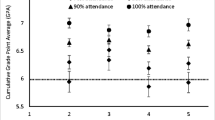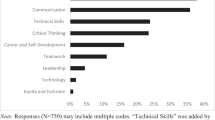Abstract
The level of science skills in Spanish students are significantly below the average of the Organisation for Economic Co-operation and Development, and university teachers agree that the level of freshmen students’ skills is too low. Moreover, the number of engineering enrollments has been declining in recent years. The purpose of this study is to improve both the level of knowledge and skills of students upon entrance into engineering programs and their general opinion about engineering studies. The aim is to establish the importance of proper coordination between groups involved in the overall educational process and to avoid, at least in part, the decline in recent engineering enrollments. The project had the following four phases: (1) determination of the freshmen’s weakest concepts; (2) assessment of high schools students’ knowledge; (3) development of educational activities; and (4) re-assessment of high school students. These measures were complemented with the high school teachers’ opinions about the students improvements and analyses of the evolution of engineering enrollments. Most of the participants significantly improved their knowledge and skills. Similarly, high school teachers believed that the attitude of the students toward engineering improved significantly.

Similar content being viewed by others
References
ANECA (2008). Informe Graduados. Titulados Universitarios y Mercado Laboral. Proyecto Reflex. Agencia Nacional de Evaluación de la Calidad y Acreditación. Accessed July, 2011 from http://www.aneca.es/media/151855/informes_reflex_graduados.pdf.
Bachnak, R., Chappa, E., & De La Rosa, K. (2009). Exposing K-12 Students to Science and Engineering. 39th ASEE/IEEE Frontiers in Education Conference, p. 4.
Becker, F. S. (2010). Why don’t young people want to become engineers? Rational reasons for disappointing decisions. European Journal of Engineering Education, 35(4), 349–366.
Bigelow, K.E. (2010). Reflections of college students promoting engineering through biomechanical outreach activities indicate dual benefits. ASEE Annual Conference and Exposition, Conference Proceedings, p. 12.
Carnegie, D. A., Watterson, C., Edwards, J., & Exley, T. (2011). Increasing engineering awareness through targeted outreach. IEEE Global Engineering Education Conference (EDUCON), pp. 128–135.
Consejería de Educación. (2008). ORDEN de 5 de agosto de 2008, por la que se desarrolla el currículo correspondiente al Bachillerato en Andalucía. Boletín Oficial de la Junta de Andalucía (BOJA), 169, 98–222.
Coster, H. (2010). 10 hard-to-fill jobs in America. Accessed July, 2011 from http://cnews.canoe.ca/CNEWS/Forbes/2010/05/31/14202021.html.
Curtis, M.W., Martin, C.S., & White, C. (2001). The Evolution of a K-12 Pre-College Program through Student Leadership Development, Proceedings of the 2001 American Society for Engineering Education Annual Conference & Exposition, p. 11.
Donohue, S.K. & Richards, L.G. (2009). Workshop K-12 engineering education: Design challenges for pre-college students. 39th ASEE/IEEE Frontiers in Education Conference, p. 3.
Eschenbach, E., Virnoche, M., Grafman, L., Stamper, F., Atkins, L., Raymond, R., et al. (2009). Improving Early Interest and Confidence in Engineering: Creating Partnerships between Universities, K-12 Teachers, their Students and Engineers. ASEE Annual Conference and Exposition, Conference Proceedings, p. 38.
Eurostat (2010). Tertiary students (ISCED 5-6) by field of education and sex. Accessed July, 2011 from http://appsso.eurostat.ec.europa.eu/nui/show.do?dataset=educ_enrl5&lang=en.
Fuehne, J. (2008). Evolution of an Engineering Technology Outreach Program. ASEE Annual Conference and Exposition, Conference Proceedings, p. 10.
Gill, J., Sharp, R., Mills, J., & Franzway, S. (2008). I still wanna be an engineer! Women, education and the engineering profession. European Journal of Engineering Education, 33(4), 391–402.
Hubbard, B. J., & Hubbard, S. M. (2009). Activities to Enhance Civil Engineering Recruitment and Coordination with Industry. Transportation Research Record, 2009, 22–30.
Hunley, S., Whitman, J., Baek, S., Tan, X., & Kim, D. (2010). Incorporating the Importance of Interdisciplinary Understanding in K-12 Engineering Outreach Programs using a Biomimetic Device. ASEE Annual Conference and Exposition, Conference Proceedings, p. 26.
Hylton, P., & Otoupal, W. (2009). Engaging secondary school students in pre-engineering studies to improve skills and develop interest in engineering careers. International Journal of Engineering Education, 25(3), 419–425.
Jones, B. D., Paretti, M. C., Hein, S. F., & Knott, T. W. (2010). An analysis of motivation constructs with first-year engineering students: Relationships among expectancies, values, achievement, and career plans. Journal of Engineering Education, 99(4), 319–336.
Kimmel, H., Carpinelli, J., & Rockland, R. (2007). Bringing engineering into K-12 schools: A problem looking for solutions?, International Conference on Engineering Education—ICEE 2007, p. 5.
Kimmel, H., & Rockland, R. (2002). Incorporation of pre-engineering lessons into secondary science classrooms. 32nd ASEE/IEEE Frontiers in Education Conference, p. 5.
López-Martín, A. J. (2010). Attracting prospective engineering students in the emerging european space for higher education. IEEE Transactions on Education, 53(1), 46–52.
Martínez-Jiménez, P., Salas-Morera, L., Pedrós-Pérez, G., Cubero-Atienza, A. J., & Varo-Martínez, M. (2010). OPEE: An outreach project for engineering education. IEEE Transactions on Education, 53(1), 96–104.
Ministerio de Educación y Ciencia. (2007). REAL DECRETO 1467/2007, de 2 de noviembre, por el que se establece la estructura del bachillerato y se fijan sus enseñanzas mínimas. Boletín Oficial del Estado (BOE), 266, 45381–45477.
Mooney, M., & Laubach, T. (2002). A template for engineering based K-12 math and science curriculum units. 32nd ASEE/IEEE Frontiers in Education Conference, p. 6.
Moskal, B. M., Skokan, C., Kosba, L., Dean, A., Westland, C., Barker, H., et al. (2007). K-12 Outreach: Identifying the broader impacts of four outreach projects. Journal of Engineering Education, 96(3), 173–189.
Nafalski, A., & Nedic, Z. (2008). Final year projects with involvement of industry and high schools. 38th ASEE/IEEE Frontiers in Education Conference, p. 5.
Noailly, J., Webbink, D., & Jacobs, B. (2011). Should the government stimulate enrolment in science and engineering studies? Applied Economics Letters, 18(4), 371–375.
OECD (2010). PISA 2009 results: What students know and can do—student performance in reading, mathematics and science (Vol. I). Accessed July, 2011 from http://dx.doi.org/10.1787/9789264091450-en.
Pamela, C., & Jacque, E. T. (2009). Exploring STEM career options through collaborative high school seminars. Journal of Engineering Education, 98(3), 295–303.
Pickering, M., Ryan, E., Conroy, K., Gravel, B., & Portsmore, M. (2004). The benefit of outreach to engineering students, Proceedings of the 2004 American Society for Engineering Education Annual Conference & Exposition, p. 12.
Powers, S., Brydges, B., Turner, P., Gotham, G., Carroll, J., & Bohl, D. (2008). Successful Institutionalization of K-12 Outreach Programs. ASEE Annual Conference and Exposition, Conference Proceedings, p. 19.
Thomas, C. (2011). Communicating engineering challenges to the world. SWE Magazine, 57(2), 8–10.
U.S. Bureau of Labor Statistics. (2010). Labor force statistics from the current population survey. Accessed July, 2011 from http://www.bls.gov/cps/tables.htm#weekearn.
Weiss, T. (2009). The 10 hardest jobs to fill in America. Accessed July, 2011 from http://www.forbes.com/2009(06/03/hard-jobs-fill-leadership-careers-employment.html.
Wilson, J., Krakowsky, A. M., & Herget, C. J. (2010). Starting early: Increasing elementary (K-8) student science achievement with retired scientists and engineers. IEEE Transactions on Education, 53(1), 26–31.
Yilmaz, M., Ren, J., Custer, S., & Coleman, J. (2010). Hands-on summer camp to attract K-12 students to engineering fields. IEEE Transactions on Education, 53(1), 144–151.
Acknowledgments
The authors gratefully acknowledge the University of Cordoba Vice Chancellor of Quality for the funds received for this project as well as the teachers and collaborating high schools: Antonio Belmonte-Pérez, Expectación Guzmán-Porras, Francisco Conejo-Ruiz, María D. Atienzar-Manuel de Céspedes and Manuel J. Salas-Morera; IES Fernando III el Santo (Priego de Córdoba), IES Gran Capitán (Córdoba), IES Antonio Galán Acosta (Montoro) and Colegio Ntra. Sra. de las Mercedes (Córdoba).
Author information
Authors and Affiliations
Corresponding author
Appendix
Appendix



Rights and permissions
About this article
Cite this article
Salas-Morera, L., Cejas-Molina, M.A., Olivares-Olmedilla, J.L. et al. Improving engineering skills in high school students: a partnership between university and K-12 teachers. Int J Technol Des Educ 23, 903–920 (2013). https://doi.org/10.1007/s10798-012-9223-7
Published:
Issue Date:
DOI: https://doi.org/10.1007/s10798-012-9223-7




